Best Fender amps 2025: From all-tube classics to cutting edge modelling options
Nail your tone for any genre and at any budget with our expert round-up of the best Fender amps you can buy right now
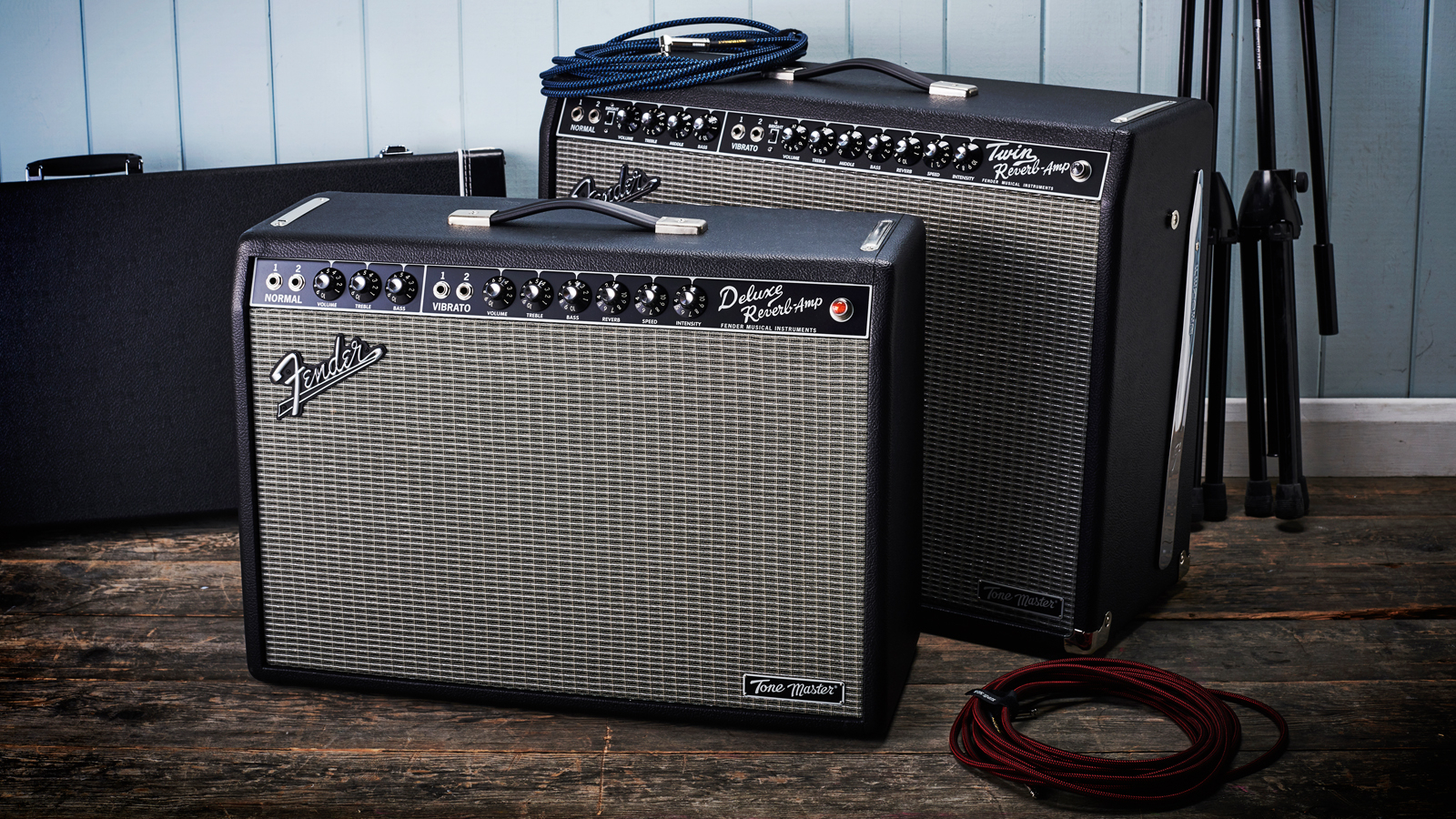
Fender is one of, if not the biggest, names in the world of guitars – however it's also just as big when it comes to amps. For decades, players from all different styles and genres have gravitated towards the best Fender amps for their rich, powerful sound.
Many of the best Fender amps are known for their clean sound. With an amp brand like Marshall, for example, most people would think of the gritty, overdriven sounds of players like Jimi Hendrix and Pete Townshend. With Fender, the sound most people think of is a big, rounded clean tone with lots of bottom end and top end sparkle. Loads of its amps do that really well, however they can also break up really nicely too, and have provided many a rock player with amazing distorted sounds.
Fender isn't a company to shy away from technology either. The best Fender amps can be found utilising both tube and solid state or modelling technology. The tube stuff is there for traditionalists, however those who want to take advantage of the latest technology can do so using Fender amps.
We’ve rounded up our pick of Fender amplifiers available today, taking into account varying playing styles and genres, as well as budget.
Best Fender amps: Our top picks
Of course, the best Fender amp for you will depend on what you want out of it. If it’s a mixture of fantastic cleans or naturally driven tones when playing live, we love the Fender Princeton. Its size means that it’s easy to transport, and although it’s loud, it’s only 12W, so you can push it to break up without having to be playing on super-sized stages.
Recent technology has meant that you can now get the sound and response of an all-tube amp without actually having to use any tubes at all. The Fender Tone Master Deluxe Reverb packs everything that players have loved about the classic amp into a more modern unit so that it’s more practical, lighter and cheaper. And for rock players, the Fender Bassbreaker 30R might have everything that you could want from an amp!
Best Fender amps: Product guide
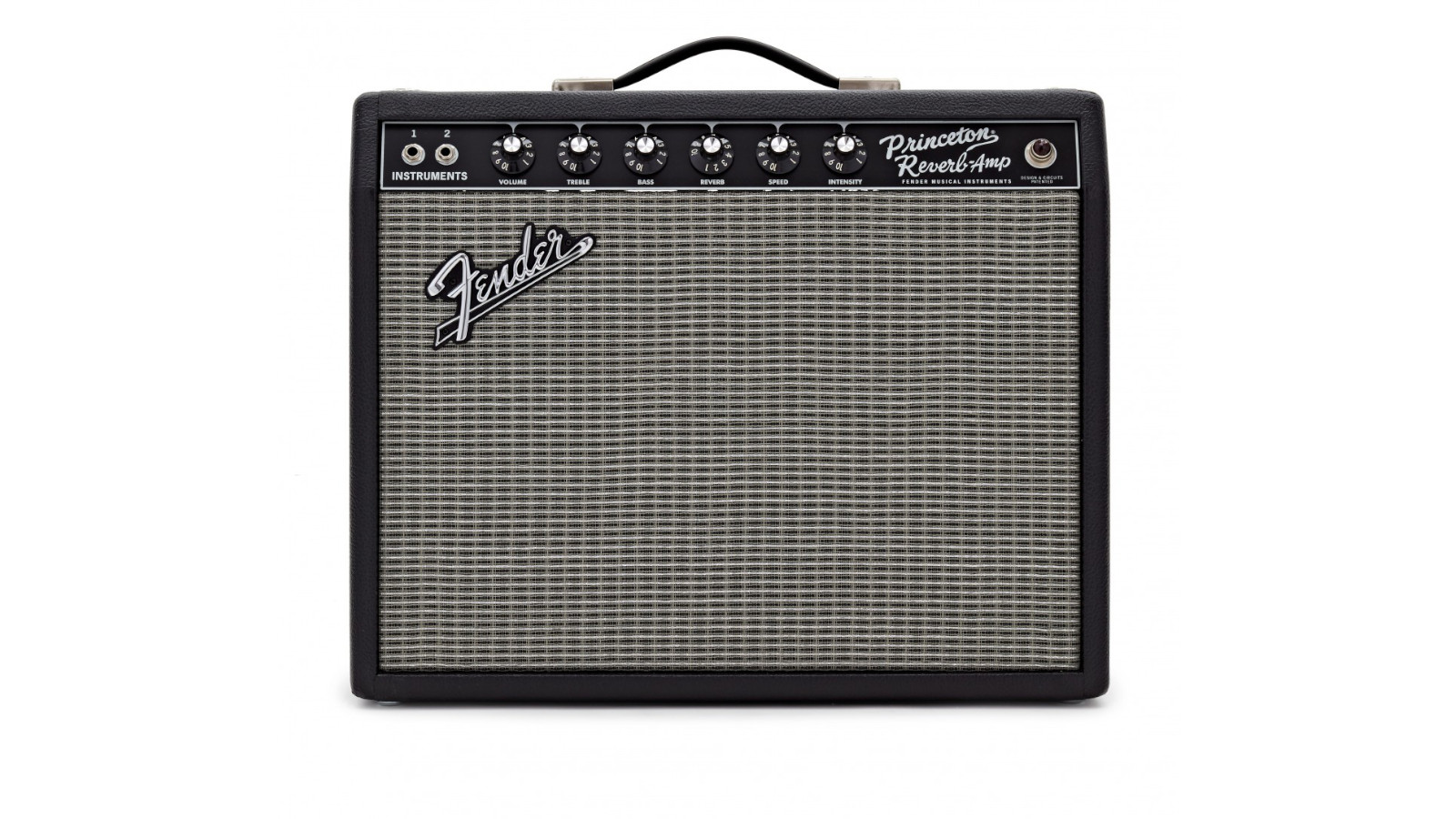
1. Fender ’65 Princeton
Our expert review:
Specifications
Reasons to buy
Reasons to avoid
The Fender Princeton is one of the most popular Fender amps around. It’s super simple, it’s got reverb and tremolo on board and it’s impossible to get a bad sound from it. Expect a nice big, warm bottom-end response, with a nice note attack and top end sparkle.
The Princeton is the perfect size for many players – it’s small enough to transport to and from gigs easily, but with its 10” speaker, it still packs a punch. It’s rated at 12W, so you can get some great sounds at home with it, when turned down, but it’s loud enough for gigs.
The black panel Princeton has more headroom than the silver panel, so you can get louder clean tones out of it, but again, because it’s only 12W, you can get it to break up without things getting crazy loud. The breakup on these things is incredible too – very warm and rich.
Read the full Fender ’65 Princeton review
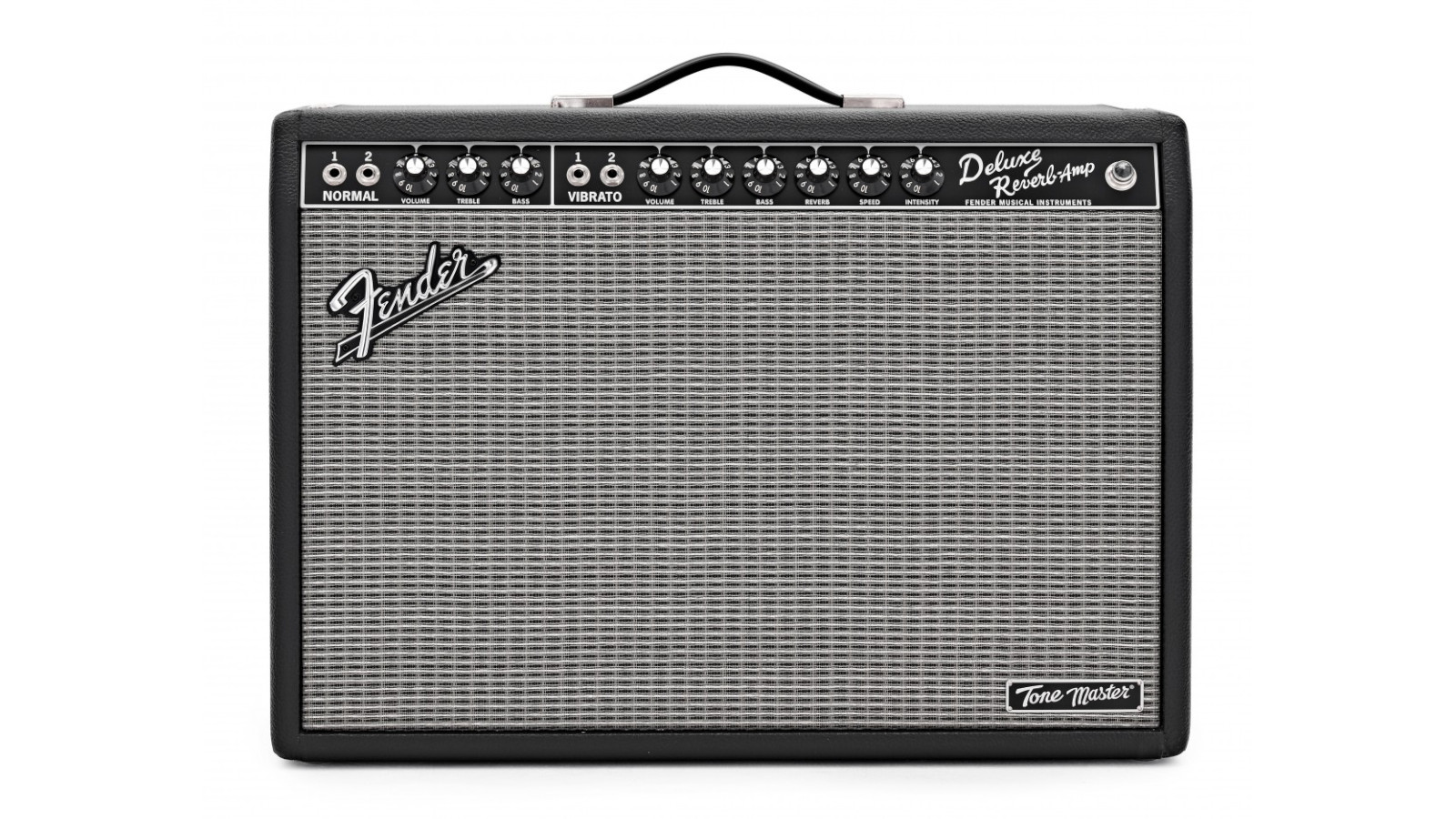
2. Fender Deluxe Reverb Tone Master
Our expert review:
Specifications
Reasons to buy
Reasons to avoid
This is a very powerful, tube-less modelling amp that delivers both the sound and response of a Fender Deluxe Reverb. The Deluxe Reverb is loved by all sorts of players around the world, however it’s heavy and it’s not always possible to get the most out of unless you’re playing on huge stages.
Weighing in at around half the weight of a traditional Deluxe Reverb, this new Tone Master version boasts 100W of power, so you get the same sort of clean headroom when playing with the volume cranked. You’ve got various different output settings as well, allowing you to knock the power down so you can achieve that famous Deluxe Reverb breakup without shaking the whole building. Being able to get beautiful, warm, organic sounding Fender overdrive at bedroom-friendly volumes really is a massive plus!
As well as the authentic, incredible tones you can get from this amp, it’s really practical for modern players too. There’s an XLR output with level control and Impulse Response cabinet emulation that allows you to connect to a recording interface, or front of house PA system at gigs, and a ground switch.
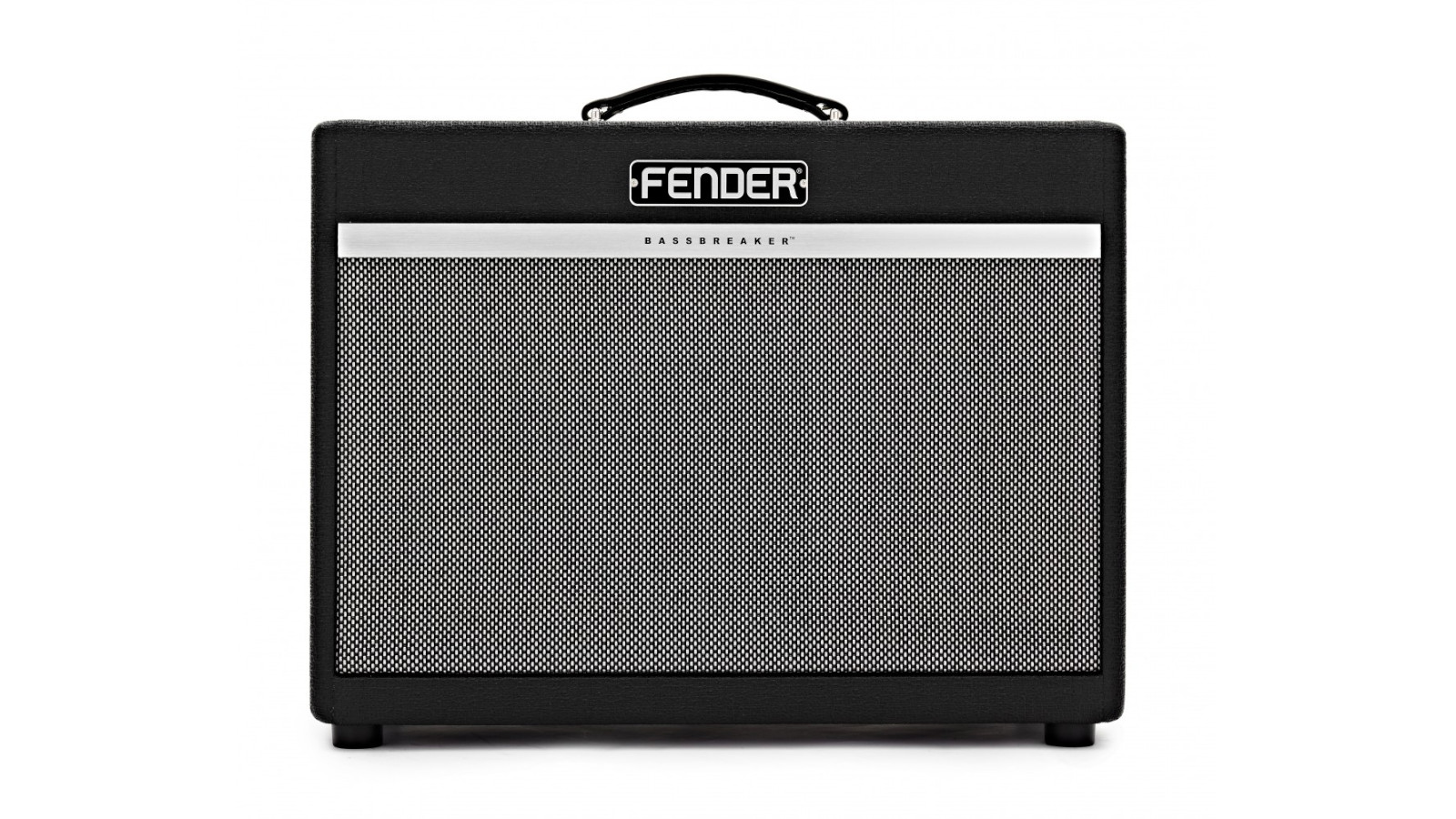
3. Fender Bassbreaker 30R
Our expert review:
Specifications
Reasons to buy
Reasons to avoid
The Bassbreaker 30R is a slight departure from what you might normally associate with Fender amps. Whilst it can certainly give you warm and full-sounding cleans, with those rich, sparkly treble frequencies, this thing is a straight up rock machine.
The Bassbreaker 30R came from the previous 15W version, with Fender listening to players’ feedback. It’s a two channel amp that lets you switch from clean to overdriven tones, however the second channel has an additional switch that enables you to introduce more gain, catering for hard rock and even metal players. This means you can essentially use it as a three channel amp, with sounds for clean, rhythm and lead, making it perfect for gigging. The driven tones also have a really nice midrange – perhaps not what you’d normally associate with Fender amps.
All of this, along with the on-board reverb, cab sim-equipped XLR output and effects loop make the Bassbreaker 30R an incredibly practical option for gigging guitarists, and certainly one of the best Fender amps available.
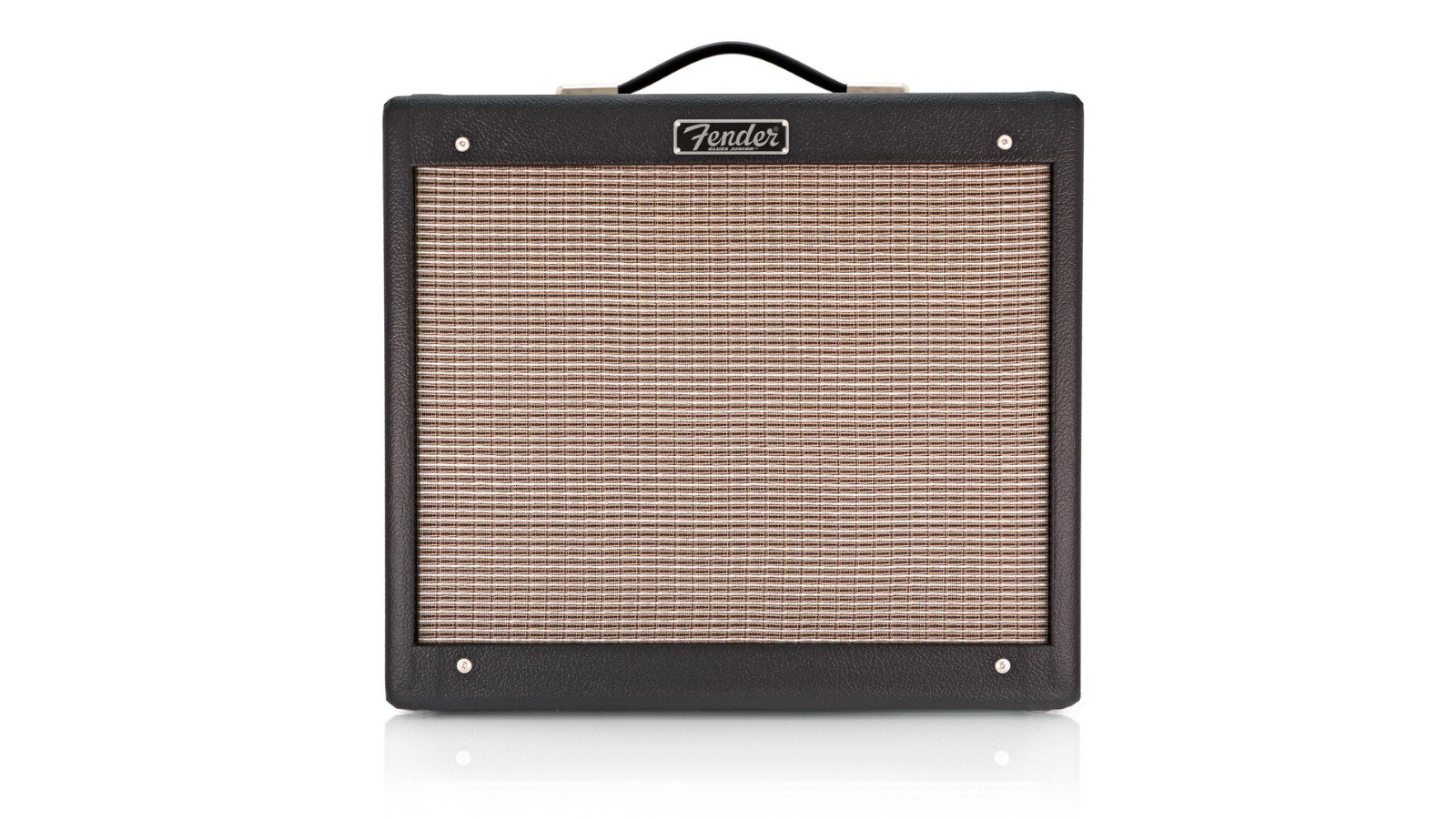
4. Fender Blues Junior IV
Our expert review:
Specifications
Reasons to buy
Reasons to avoid
The Fender Blues Junior has been a hit since its first years of production in the mid-’90s. It perfectly blends practicality, portability and affordability, not to mention it sounds great. The Blues Junior makes for a great working amp for any guitar player. For those wanting classic Fender cleans, it can do that. For players that like to rely on an abundance of pedals, the Blues Junior is the perfect platform for that, and those that want a little organic drive from the amp itself are also catered for.
The most recent mark IV iteration of the Blues Junior firmly stamps its place as one of the best Fender amps. The clean tone is nice and chimey, the overdrive is nice and growly, and the Celestion 12” A-Type speaker helps deliver all sounds with plenty of character. For a small and portable amp, it sounds really full – no wonder people have been using these for gigs and studio sessions for the last few decades.
Read the full Fender Blues Junior IV review
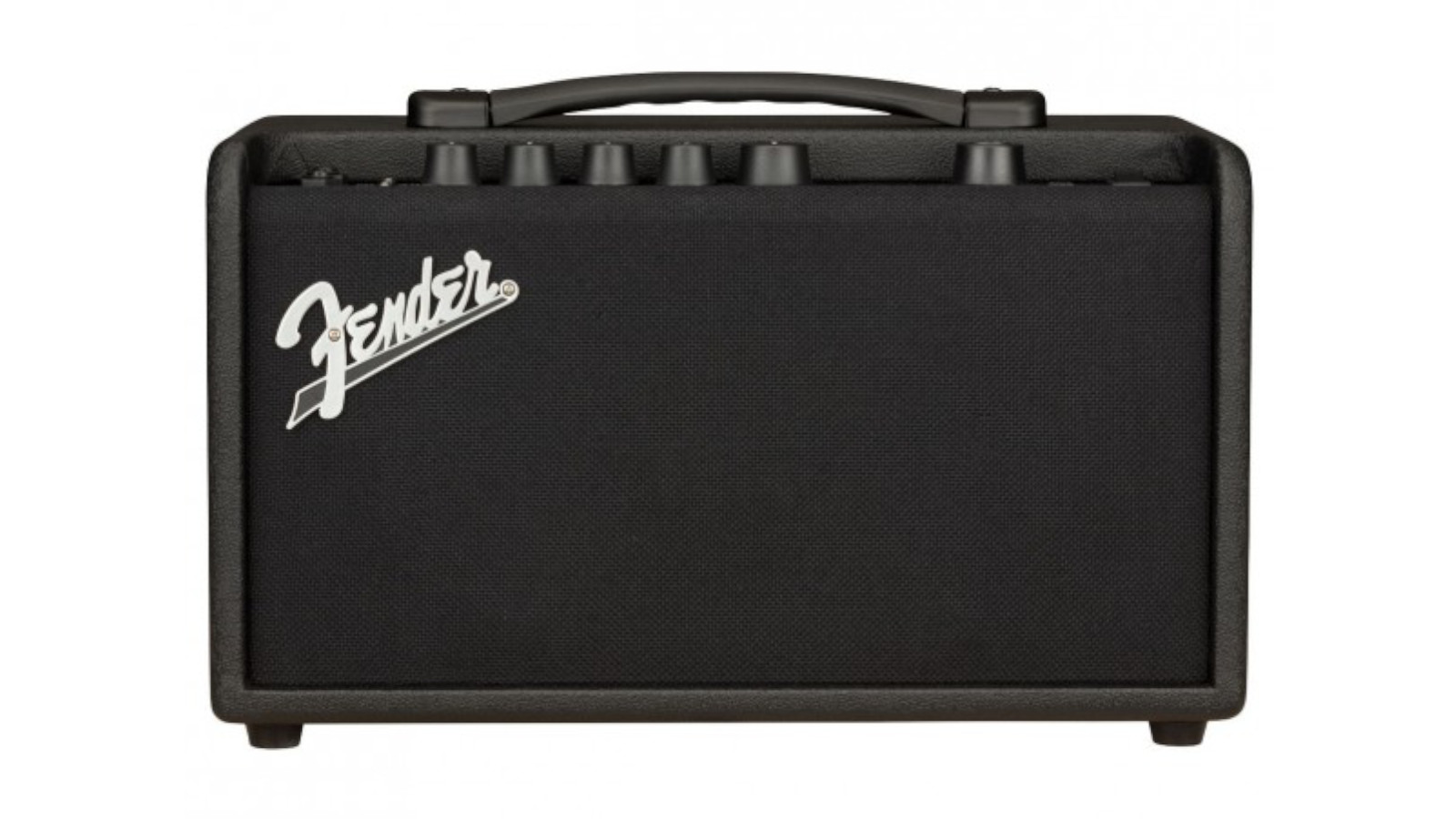
5. Fender Mustang LT40S
Our expert review:
Specifications
Reasons to buy
Reasons to avoid
This is a compact desktop modelling amp that packs in a mighty wide array of different tones suitable for everything from metal to pop. So if you’re looking for the best Fender amp to cover as much ground as possible at home or wherever you practice, then this could well be it.
It’s got some great models of classic Fender amps, so you can cover the clean stuff with ease. You’ve then got a bunch of presets that cover some really nice crunchy tones, as well as higher gain options. There are also some fantastic effects built into this, so you can get pretty experimental with your sounds. The twin 4” speakers give you some amazing stereo sounds too, so if you’re using delays and reverbs, you can get a nice, wide stereo image with this compact amp.
It’s really easy to use, and the colour screen helps you keep track of where you are. It’s also compatible with the Fender Tone Desktop App where you can further tweak your sounds, explore new presets and update the firmware.
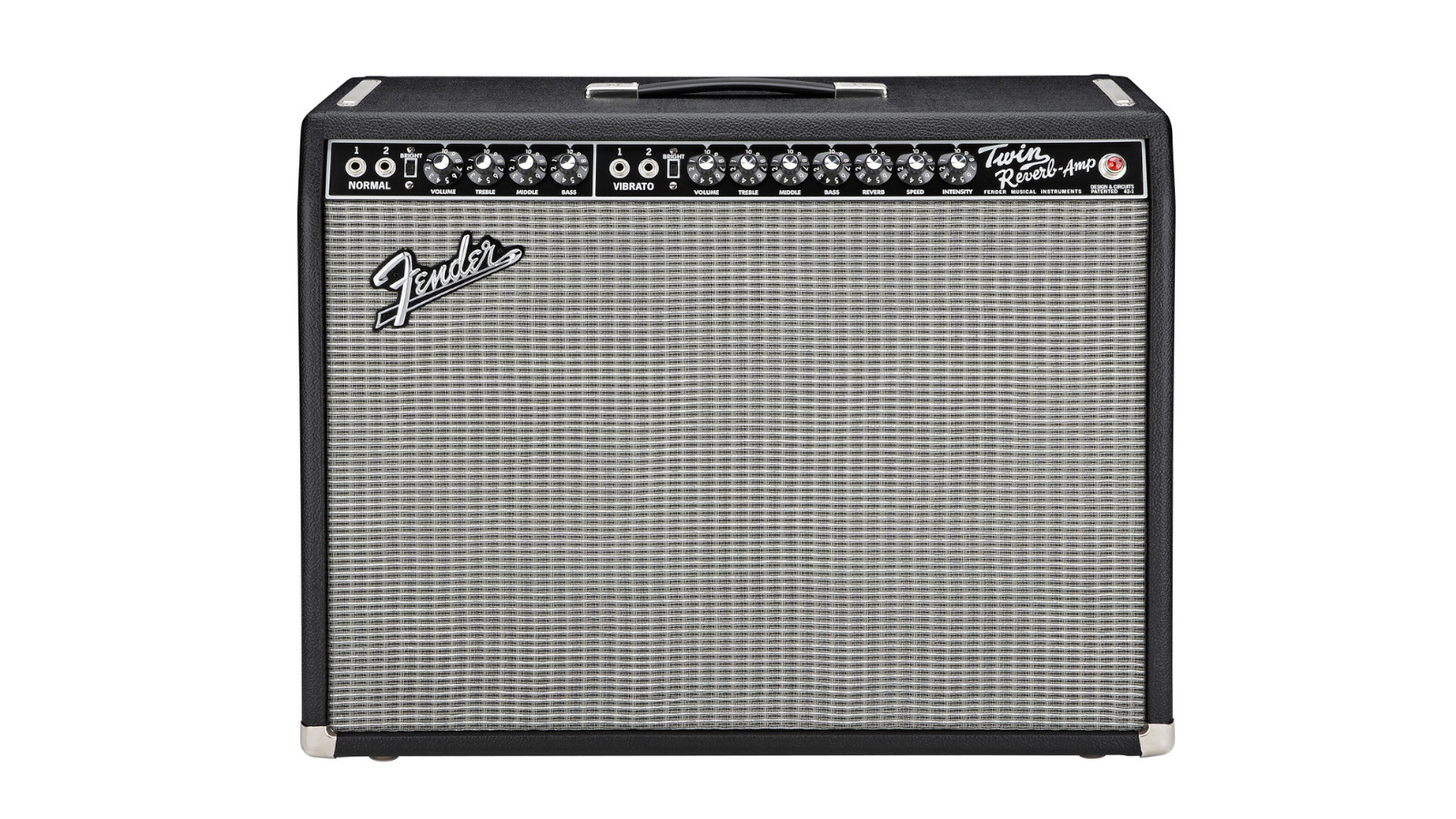
6. Fender ’65 Twin Reverb
Our expert review:
Specifications
Reasons to buy
Reasons to avoid
Nothing has the response, and headroom, of a Fender Twin. It has been the choice of players seeking loud, clean tones for decades, and still is today. They’re not necessarily the most practical, but if we’re talking dream scenarios, then it’s absolutely one of the best Fender amps.
The Twin is really loud, so if you’re playing big venues, or perhaps you’re not always going to be able to mic up your amp, then this can be really useful. You’ve got tons of headroom – you really have to crank it to get it to break up. If overdrive is your thing, then you’d better hope your neighbours don’t mind a racket! You can of course use pedals to get overdrive, and the Twin works really well for that. The EQ is super responsive too, so if you’re using the Twin as a blank canvas for your pedalboard, then you can easily and precisely tweak the EQ to suit them.
The Fender Twin is big, loud and heavy, but there’s so much character to it. If you’re keeping the amp in one place and you’ve got the ability to turn it up to really get the most out of it, then it is absolutely one of the best Fender amps there is.
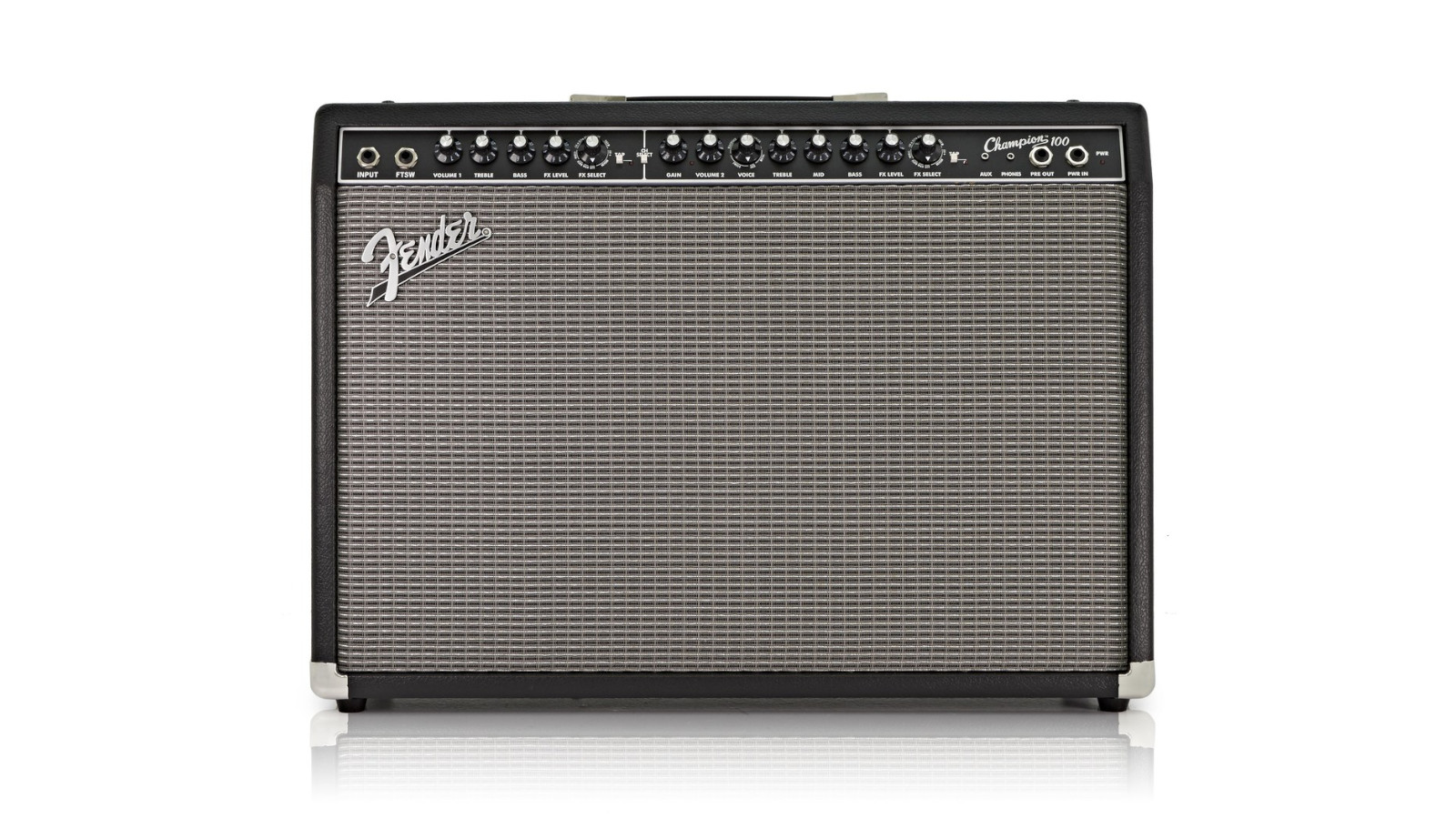
7. Fender Champion 100
Our expert review:
Specifications
Reasons to buy
Reasons to avoid
If you’re looking for a budget amp to play shows with, then the Champion 100 is going to be worth checking out. With two 12” speakers, and 100W of solid state modelling power, you’ve got more than enough in the tank to retain your clean sound at high volumes, and get lots of clarity and detail in your distortion sounds.
The Champion 100 can model various different classic Fender amps, though you can also dial in more contemporary sounds that are well suited to modern rock and metal. It’s a two-channel amp too, so you can very quickly and easily switch between different sounds. It’s incredibly versatile, so it doesn’t matter what style of music you play – the Champion 100 has you covered. Add to this a bunch of on-board effects, like reverb, tremolo, chorus, delay and more and you’ve got a great budget amp, with plenty of tricks up its sleeve.
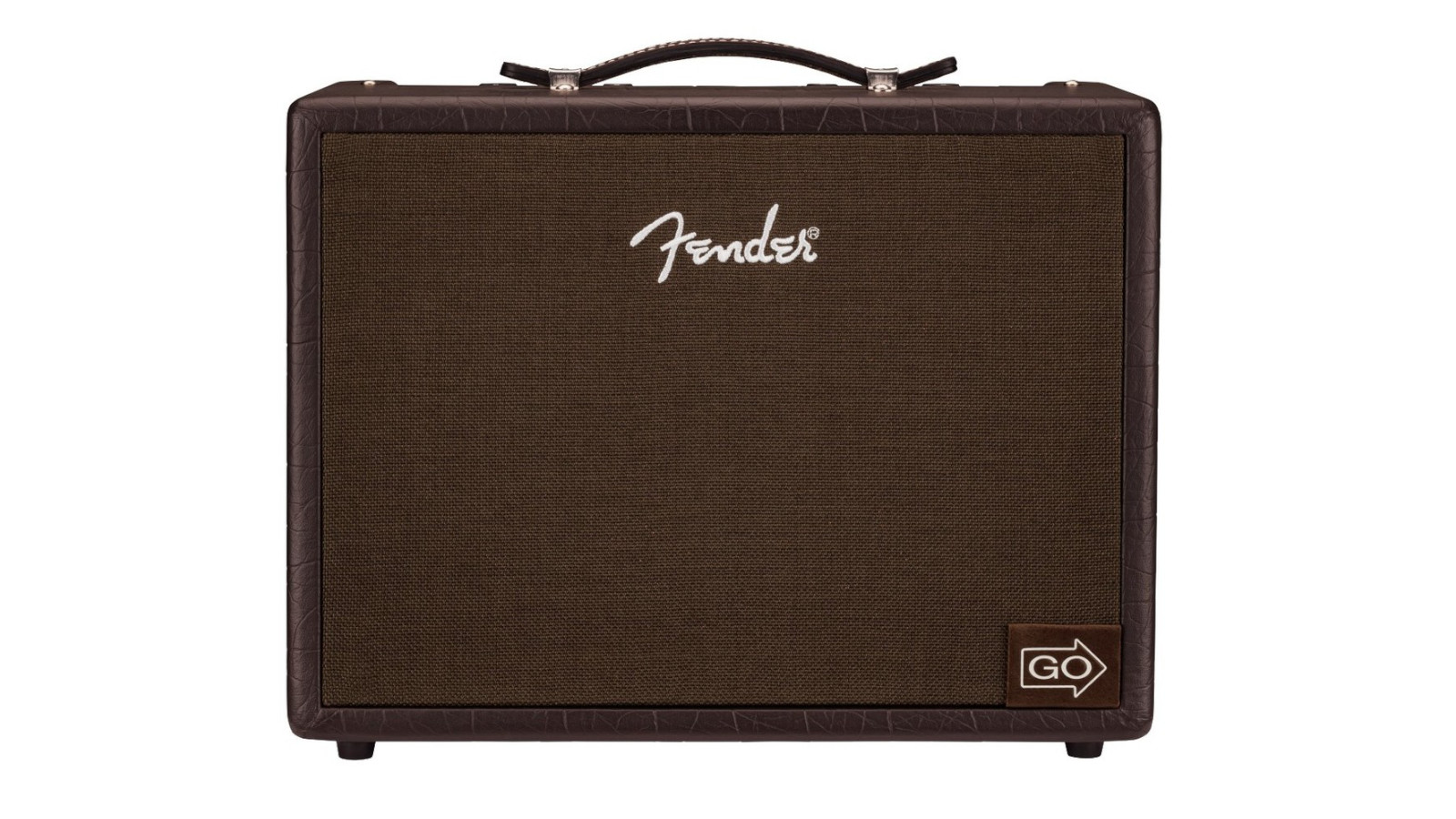
8. Fender Acoustic Jr GO
Our expert review:
Specifications
Reasons to buy
Reasons to avoid
You might associate Fender with electric guitar amplification – that’s certainly what it's best known for – but it does also make some amazing electro-acoustic guitar amps.
The Fender Acoustic Junior Go is a twin channel 100W amp designed for use with guitars and microphones, so on one side you can plug in your electro-acoustic, and on the other you can plug in a vocal microphone. Combined with its rechargeable lithium battery, it makes for the perfect busking amp. You can get great guitar sounds – nice and clear, with plenty of volume on tap if you need it – plus both channels have a range of effects that can be used independently.
This amp is really easy to use, plus it looks nice too. Maybe you’re just after something to have at home that can recreate the set-up of a vocal mic and acoustic guitar plugged in – the Acoustic Junior Go can do just that, and you’re not having to erect a big PA system in your living room!
Best Fender amps: Buying advice
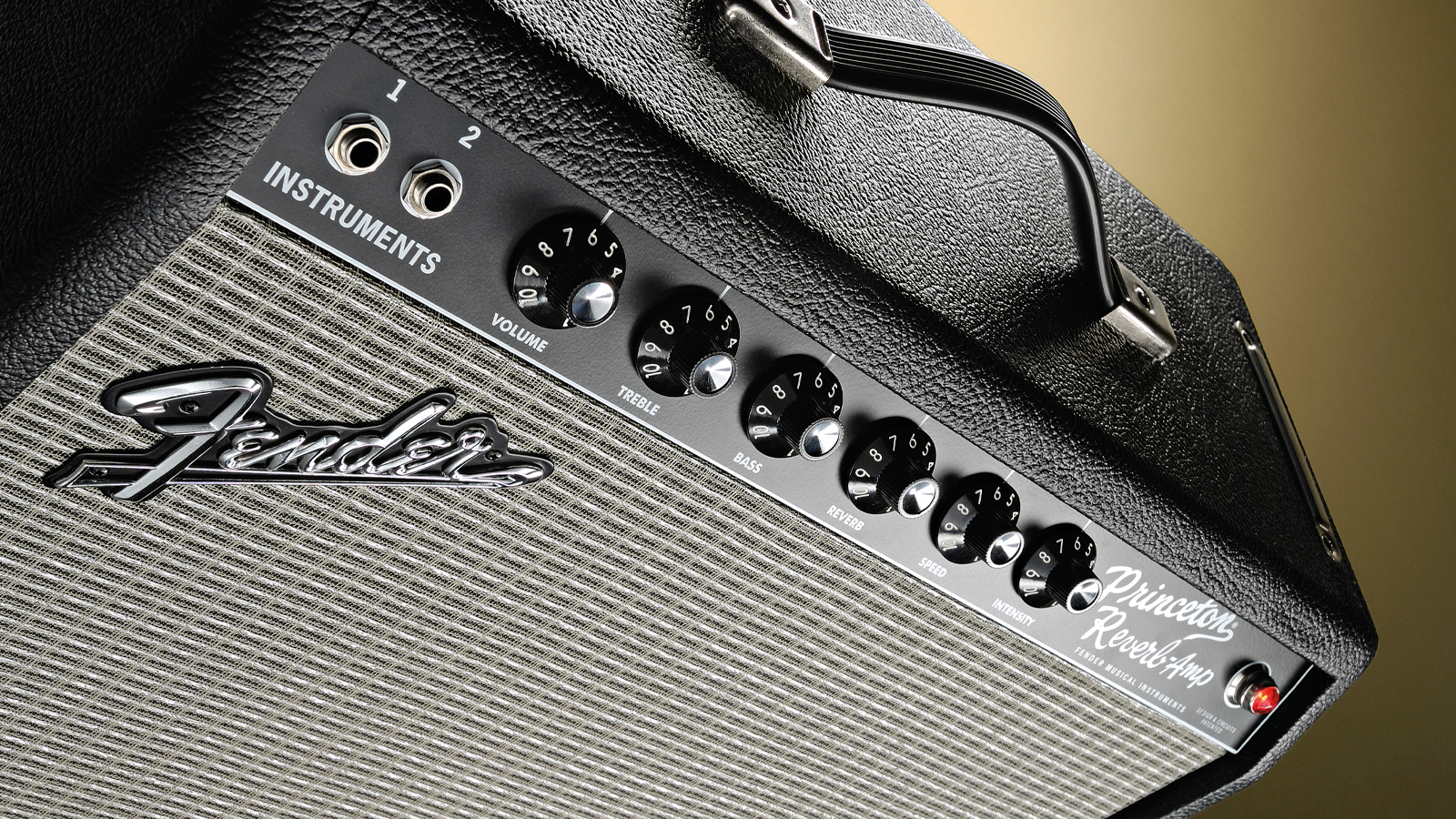
How to choose the best Fender amp for you
MusicRadar's got your back
When looking for the best Fender amp, having some knowledge of where they have come from and what they’re about can certainly help. Fender has been one of the biggest names in the world of guitars and amps since the 1940s. Before turning to guitars, Leo Fender was primarily focused on PA systems and guitar amps, tinkering with existing designs and making his own.
When it came to making his own amps for production in the mid-late ’40s, a few designs were born that have since become legendary: namely the Princeton, the Professional and the Deluxe. In the decades thereafter, Fender amps went through various phases each with their own unique tonal characteristics and aesthetics. Tweed, black panel, silver panel and drip edge Fender amps are sought after by different players seeking out particular sounds. Many of the best Fender amps on the market today are reproductions of classic models from these eras.
Tube vs solid state vs modelling
A definitive split can be made when looking at the best Fender amps. All of them either fall under the title of tube-amp or solid-state/modelling amp. All of the classic Fender amps from the ’40s, ’50s and ’60s used tube technology. Generally speaking, tube amps sound warm, rich and musical, have a dynamic response, and will compress and break up naturally as you turn them up (how quickly they do this depends on how much headroom they’ve got).
For many years, tube amps have been seen as superior – they tend to be more expensive and, until recently, most of the pros you’d see on stage and in the studio would be using them. Technology has come on so much though that non-tube amps have become a very reliable option for beginners and professionals alike.
Modelling amps aim to replicate both the sound and response of a tube amp. With the Fender Tone Master amps, they are honing in on one particular amp, but other modelling amps will have a wide range of sounds on board and can be used for pretty much any style of music. You will also find effects on these amps too.
To some players’ ears, solid-state amps can sound more sterile and lacking in character, but it’s very subjective. You can, however, turn up the clean channel, and it won’t break up, so if clean headroom is your thing then it’s something to consider. Solid state and modelling amps are usually a lot lighter than tube amps too.
Understanding gain
Some of the best Fender amps are better suited to playing with gain than others. If your driven tones come from your pedals, then an amp that stays clean will likely benefit you more. However, you can get great distortion from driving a tube amp naturally. Something like the Bassbreaker 30R has an overdrive channel that easily lets you set your gain, however the more traditional amps require you to increase the volume to get the tubes really working to get an overdriven sound.
How we chose the best Fender amps for this guide
Here at MusicRadar, we are experts in our field, with many years of playing, creating and product testing between us. We live and breathe everything music gear related, and we draw on this knowledge and experience of using products in live, recording and rehearsal scenarios when selecting the products for our guides.
When choosing what we believe to be the best Fender amps available right now, we combine our hands-on experience, user reviews and testimonies and engage in lengthy discussions with our editorial colleagues to reach a consensus about the top products in any given category.
First and foremost, we are musicians, and we want other players to find the right product for them. So we take into careful consideration everything from budget to feature set, ease of use and durability to come up with a list of what we can safely say are the best Fender amps on the market right now.
Find out more about how we test music gear and services at MusicRadar.
Related buyer's guides
- Best mini amps for guitar: big tones in a small package
- Best guitar amps under $300/£300: killer tone for less
- Best guitar amp headphones: from wearable tech to pro in-ears
- Best small guitar amp: compact tube, solid-state and modelling amps
Get the MusicRadar Newsletter
Want all the hottest music and gear news, reviews, deals, features and more, direct to your inbox? Sign up here.
After spending a decade in music retail, Richard is now a freelance writer for MusicRadar, Guitar Player, Guitar World and Reverb, specialising in electric and acoustic guitars, bass, and almost anything else you can make a tune with. When his head’s not buried in the best of modern and vintage gear, Richard runs a small company helping musicians with songwriting, production and performance, and plays bass in an alt-rock band. Otherwise, you'll probably find him out walking the dog!
“It’s honestly got me thinking hard about adding one to my own studio set up”: Two Notes Reload II review
“I’m beyond excited to introduce the next evolution of the MT15”: PRS announces refresh of tube amp lineup with the all-new Archon Classic and a high-gain power-up for the Mark Tremonti lunchbox head
